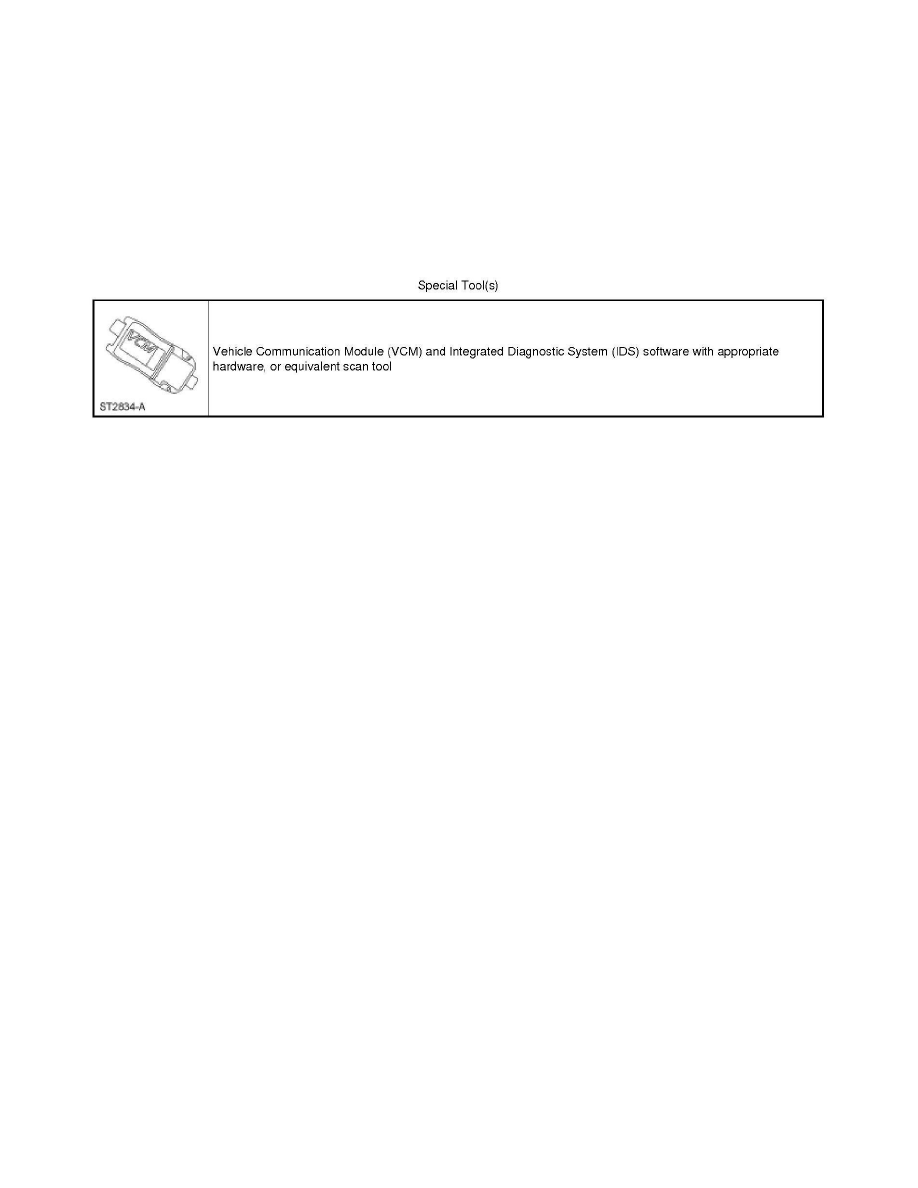Mariner 2WD L4-2.5L Hybrid (2010)

seconds (this additional 3 second time frame allows for the RKE data transfer to take place, if programming an IKT key).
8. NOTE: The new key will now start the vehicle and will also operate the RKE functions, if there are 4 or fewer IKT keys programmed to the
vehicle.
Start the vehicle with the new key.
-
If it is an IKT key, verify the RKE functions.
9. If additional programmed keys are desired, repeat Steps 1-7.
Integrated Keyhead Transmitter (IKT) Key Programming Using Diagnostic Equipment
Integrated Keyhead Transmitter (IKT) Key Programming Using Diagnostic Equipment
NOTE: This procedure is used when a customer needs keys programmed into the system and does not have 2 programmed ignition keys available. This
procedure is also useful when a programmed ignition key(s) is lost or the ignition lock cylinder is replaced, and it is desired to erase key code(s) from the
Passive Anti-Theft System (PATS) memory.
NOTE: This procedure erases all programmed ignition keys from the vehicle memory and the vehicle does not start until 2 keys are programmed to the
vehicle. This procedure also erases the Integrated Keyhead Transmitter (IKT) identification codes (TICs) from the Smart Junction Box (SJB), preventing
the erased IKT from operating the Remote Keyless Entry (RKE) functions on the vehicle.
NOTE: A minimum of 2 PATS keys must be programmed into the Instrument Cluster (IC) before the vehicle starts.
NOTE: Two PATS encoded (contains a transponder) IKT keys (or standard PATS keys) with the correct mechanical cut must be available to carry out
this procedure. One or both of them can be the customer's original keys. One or both of them can be an IKT or a standard PATS key.
NOTE: If additional keys are to be programmed, refer to Key Programming Using Two Programmed Keys See: Accessories and Optional
Equipment/Antitheft and Alarm Systems/Testing and Inspection/Programming and Relearning/Anti-Theft - Passive Anti-Theft System (PATS)/Key
Programming Using Two Programmed Keys. If the remaining keys are with the customer and are not available with the vehicle, instruct the customer to
refer to the Owner's Literature for instructions on programming the remaining keys. In this case, the IC PID SPAREKEY must be enabled.
NOTE: This procedure is not necessary if only the PATS transceiver was replaced. Replacement of the transceiver does not erase the PATS key codes
in the IC.
1. Turn the key from the OFF position to the ON position.
2. From the scan tool, enter TOOLBOX. Select: BODY - SECURITY - PATS Functions and follow the Integrated Diagnostic System (IDS)
on-screen instructions to ENTER SECURITY ACCESS. For additional information, refer to Anti-Theft Security Access See: Accessories and
Optional Equipment/Antitheft and Alarm Systems/Testing and Inspection/Component Tests and General Diagnostics.
3. From the scan tool menu select: "Ignition Key Code Erase". Follow all IDS on-screen instructions until the key erase procedure completes. The
scan tool also instructs to program 2 keys to complete the process.
4. Turn the key to the OFF position and disconnect the scan tool (the key does not need to be removed at this time).
5. NOTE: The RKE data transfer takes place between the key and the IC first. After both keys are programmed into the IC, the RKE data transfers
from the IC to the Smart Junction Box (SJB). Until the final data transfer takes place into the SJB, the RKE function does not operate.
NOTE: IKT keys require a 6-second programming time frame for the RKE data transfer to take place, while standard PATS keys only require a
minimum of 3 seconds.
Turn the first PATS key to the ON position for a minimum of 6 seconds (this additional 3 second time frame allows for the RKE data transfer to
take place).
6. Turn the first PATS key to the OFF position and remove the key from the ignition lock cylinder.
